Enhancing Soft Skills for DevOps Engineers: Essential Non-Technical Skills to Thrive
Growing Learning and Adapting to Change
Section Agenda
Welcome to the “Growing, Learning, and Adapting to Change” lesson with Michael Forrester. In this session, you’ll discover how to cultivate a growth mindset, build effective learning rituals, and handle the influx of new tools and concepts in IT.
| Section | Topic | Key Focus |
|---|---|---|
| 1 | Pre-Assessment | Gauge openness to change |
| 2 | Mindset of Continual Improvement | Foster consistent, incremental growth |
| 3 | Learning Strategies | Prioritize and focus your learning path |
| 4 | Rituals of Growth and Learning | Establish daily or weekly learning habits |
| 5 | Skill Acquisition Over Time | Understand the stages from frustration to mastery |
| 6 | Handling Knowledge Overload | Manage and filter information effectively |
| 7 | Adapting to Change | Overcome resistance to new ideas |
| 8 | Summary & Final Assessment | Reinforce takeaways and measure progress |
1. Pre-Assessment
Are you truly open to change, able to adapt quickly, and committed to continuous growth? Begin by reflecting on your current mindset.
Note
Answer honestly—self-awareness is the first step toward improvement.

2. Mindset of Continual Improvement
Continual improvement (Kaizen) means taking small, consistent steps each week, month, or year. In fast-paced IT environments, a growth mindset helps you stay ahead.
- Focus on incremental wins
- Embrace feedback loops
- Celebrate small milestones
Consider pairing this approach with SMART goals to keep progress measurable.
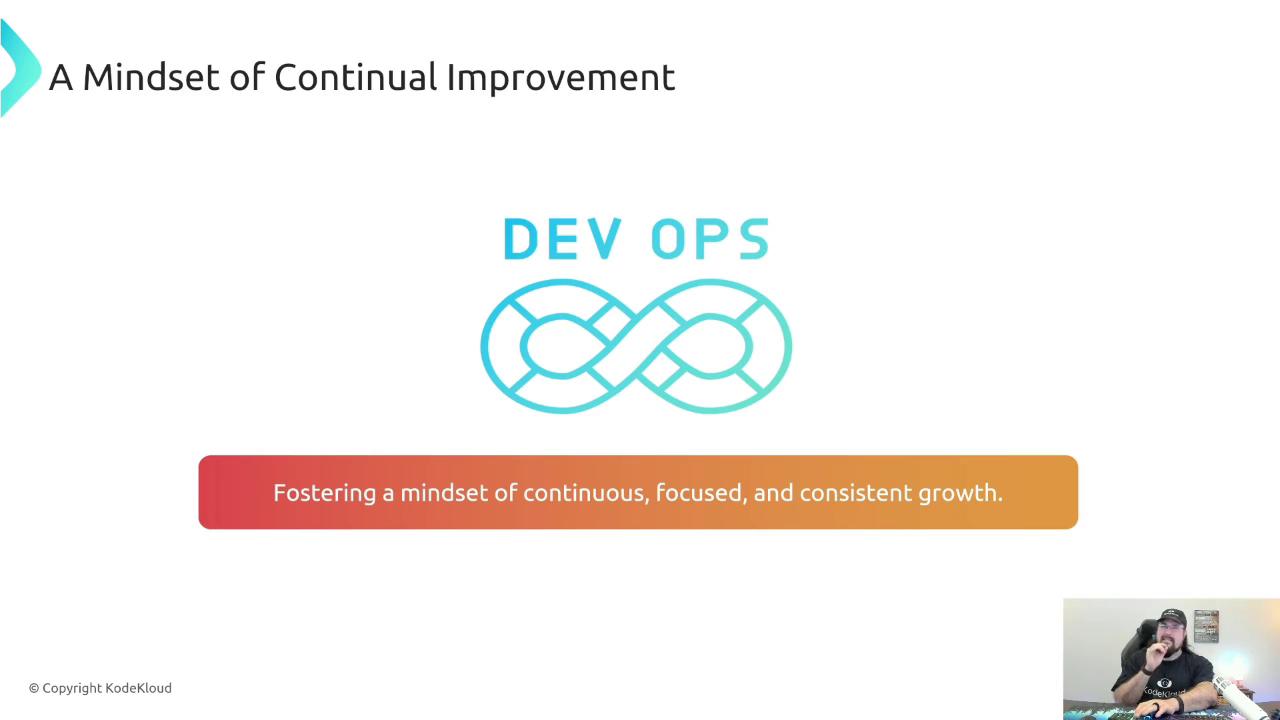
3. Learning Strategies
With so many resources—blogs, videos, courses—how do you choose what’s most relevant? Deploy these strategies:
- Identify skill gaps based on your role
- Set clear, time-boxed learning objectives
- Use curated playlists or reading lists
Note
Leverage tools like Anki for spaced repetition and retention.
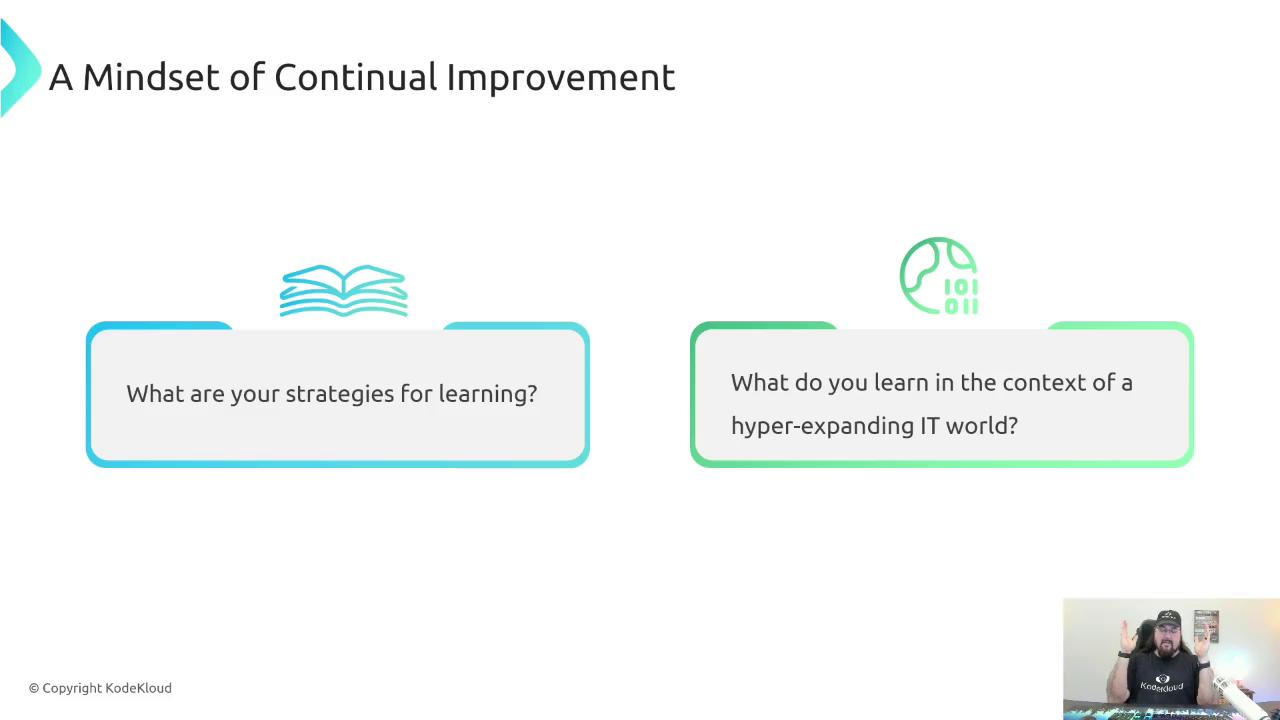
4. Rituals of Growth and Learning
Habits anchor your progress. Whether it’s:
- 15 minutes of coding challenges daily
- Weekly mini-projects
- Monthly book summaries or podcast deep dives
Rituals keep you accountable and reinforce your growth loop.
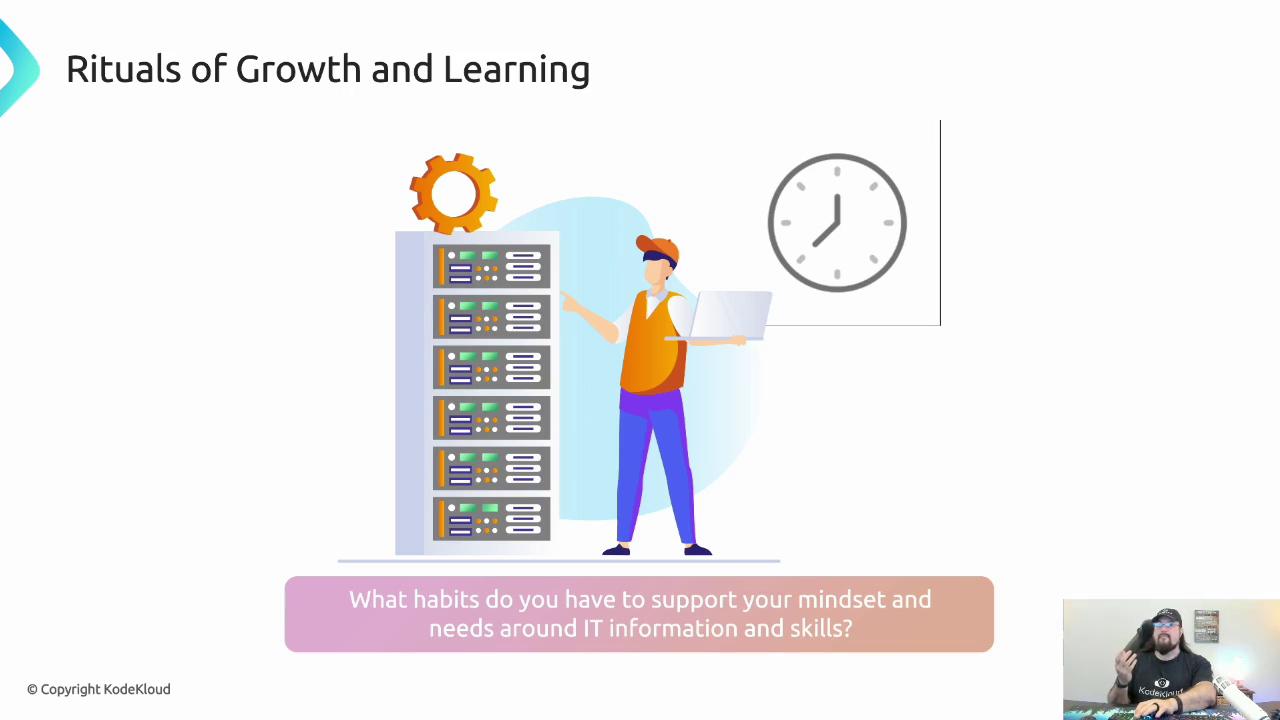
5. Skill Acquisition Over Time
Acquiring new skills follows a pattern:
- Excitement: “This looks fun!”
- Frustration: “Why isn’t this working?”
- Breakthrough: “I’m getting it!”
- Doubt: “Am I really doing this right?”
- Mastery: “I did it.”
Awareness of these stages helps you push through plateaus.
Note
Cycles of discomfort are normal—perseverance leads to mastery.
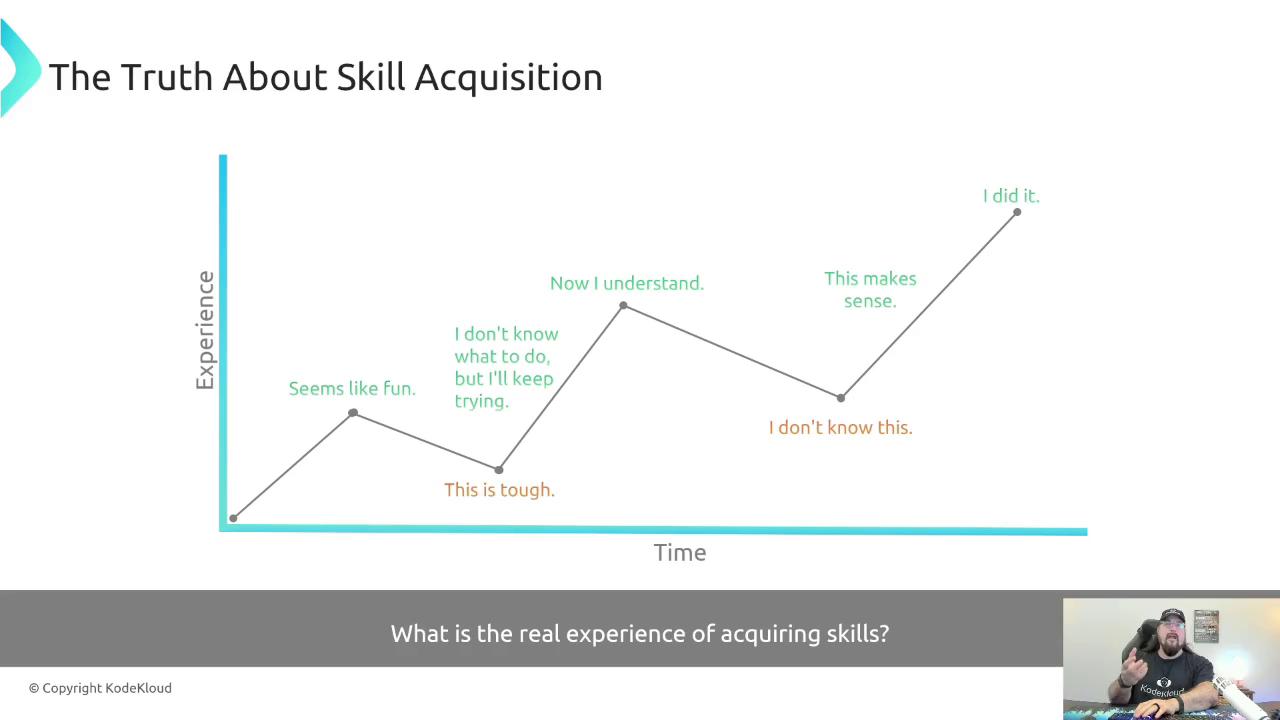
6. Handling Knowledge Overload
IT terminology, frameworks, and tools can flood your brain. Tackle overload by:
- Prioritizing skills that align with current projects
- Filtering noise: curate one newsletter or blog feed
- Chunking information into manageable learning blocks
Warning
Avoid binge-learning—overloading your brain leads to burnout.
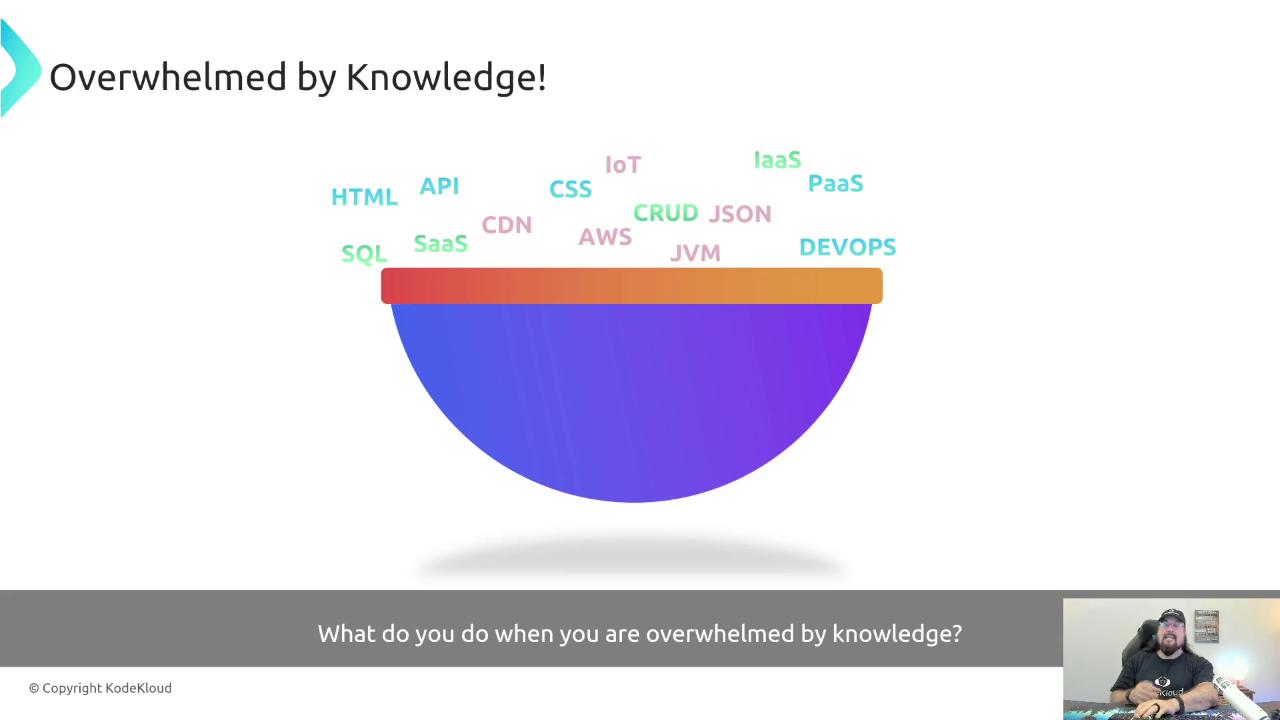
7. Adapting to Change
New technologies often face initial pushback. For example, containerization seemed risky at first but now powers cloud-native apps. To embrace change:
- Test new tools in a sandbox environment
- Document learnings and share with peers
- Reflect on wins and setbacks
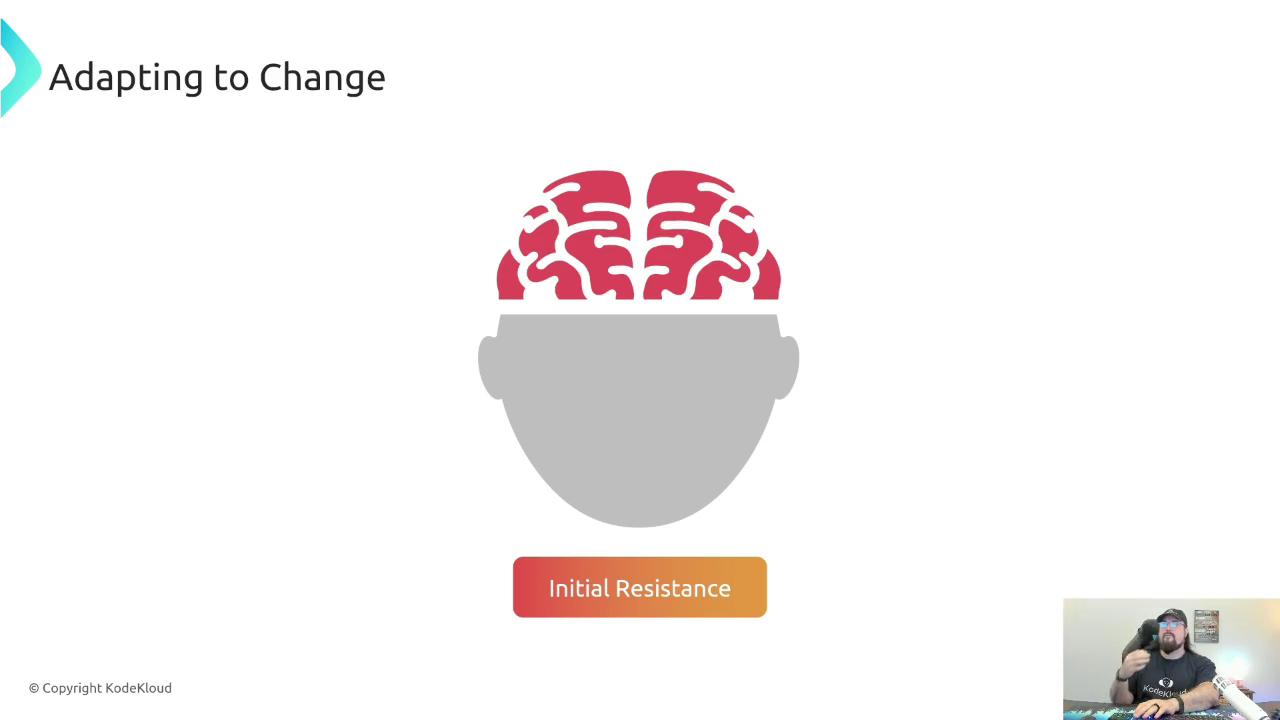
8. Summary & Final Assessment
Reinforce your learning with a quick self-assessment on:
- Openness to change
- Growth-oriented habits
- Effective learning routines
- Stress management for information overload
- Willingness to experiment with new tools
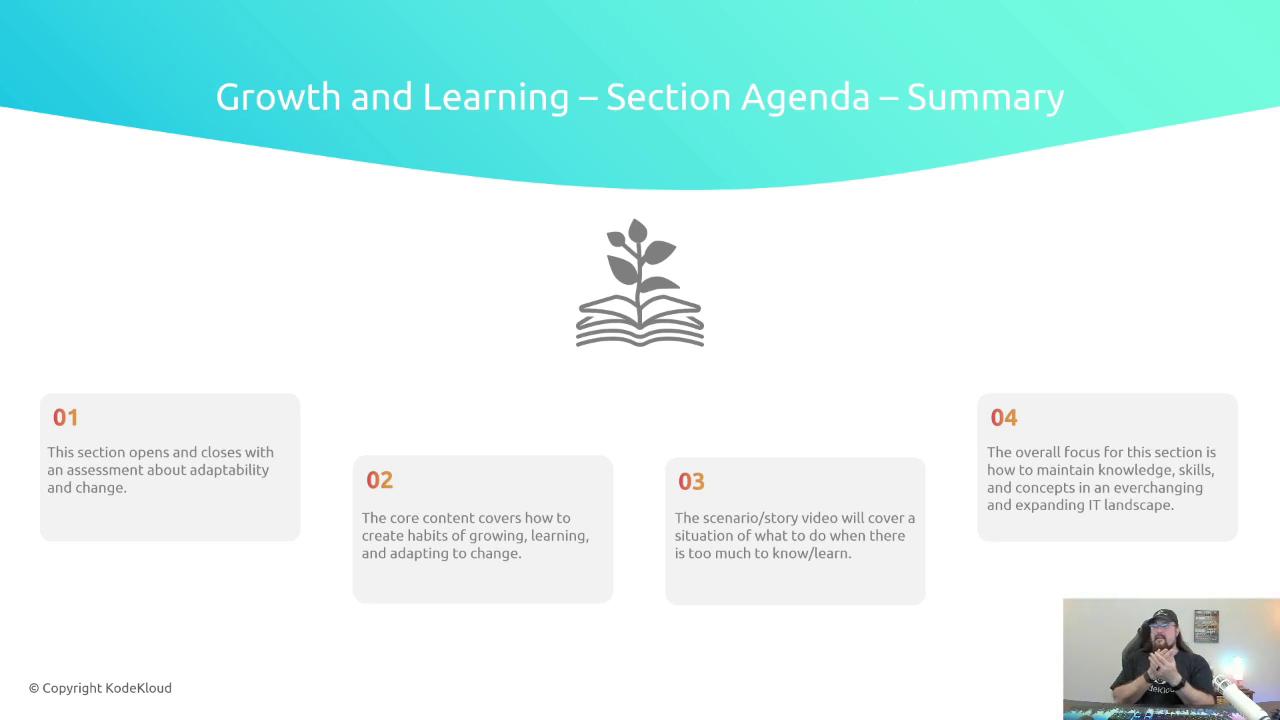
Thanks for joining this lesson. See you in the next module!
References
- Kaizen and Continuous Improvement
- SMART Criteria for Goal Setting
- Cognitive Load Theory
- Anki Spaced Repetition
- Containerization Overview
Watch Video
Watch video content